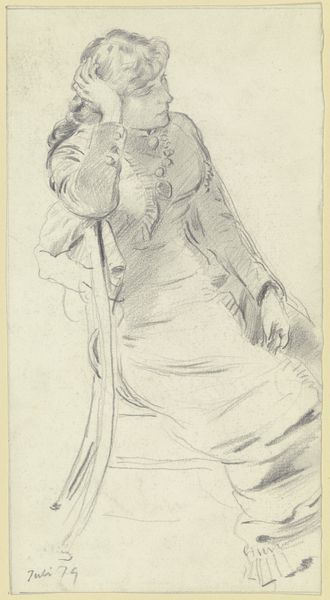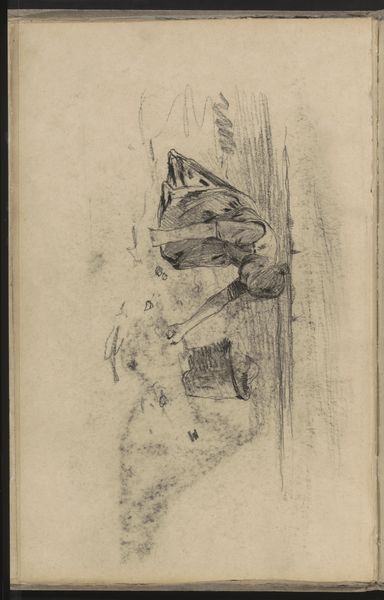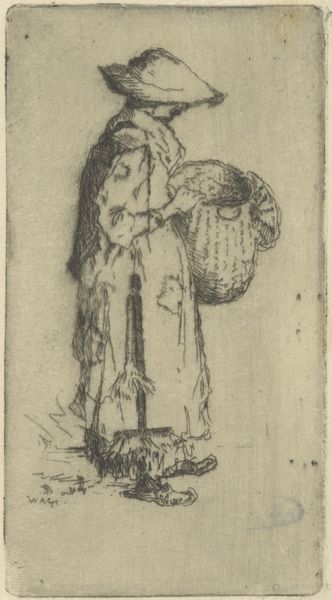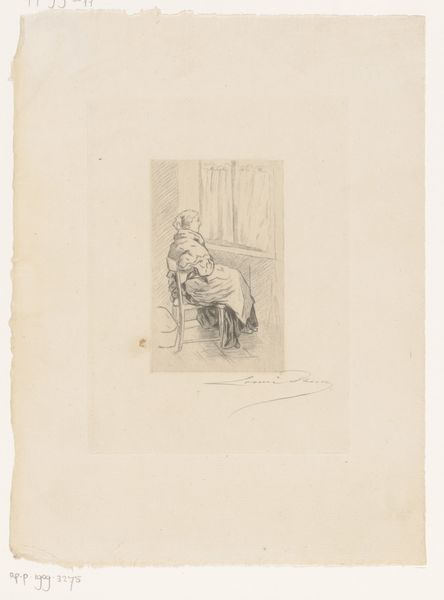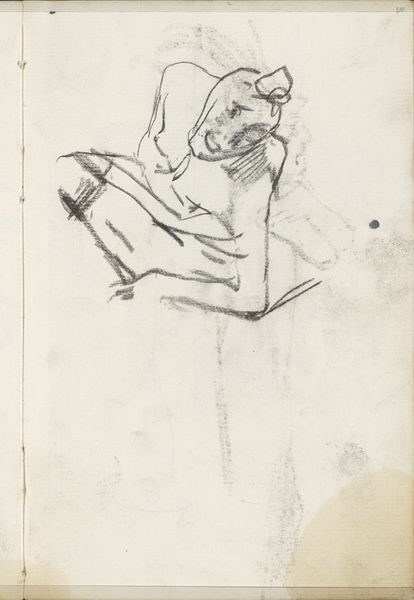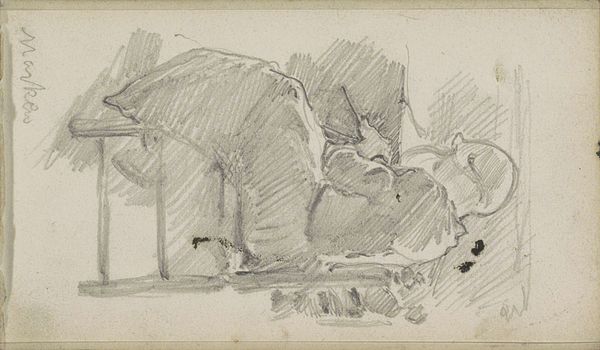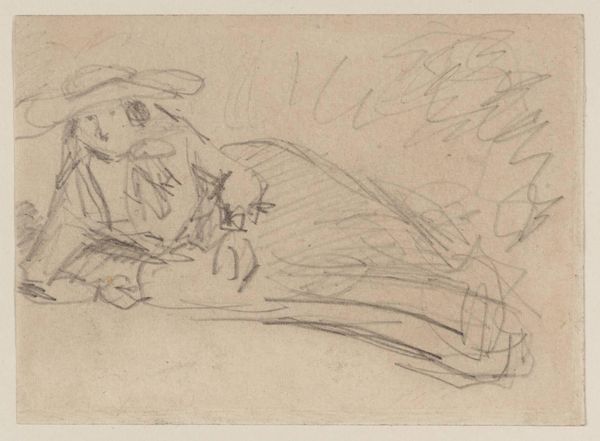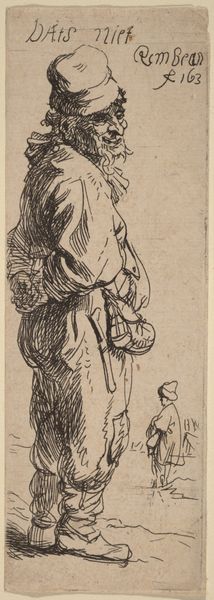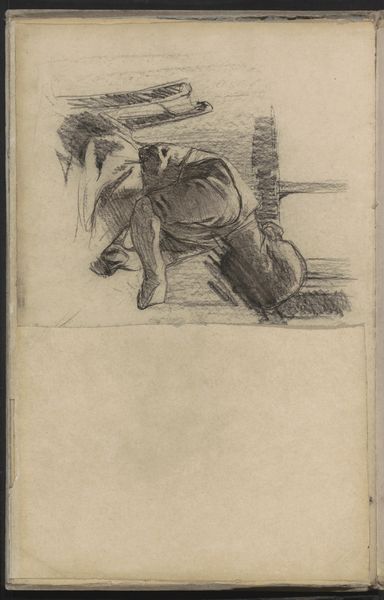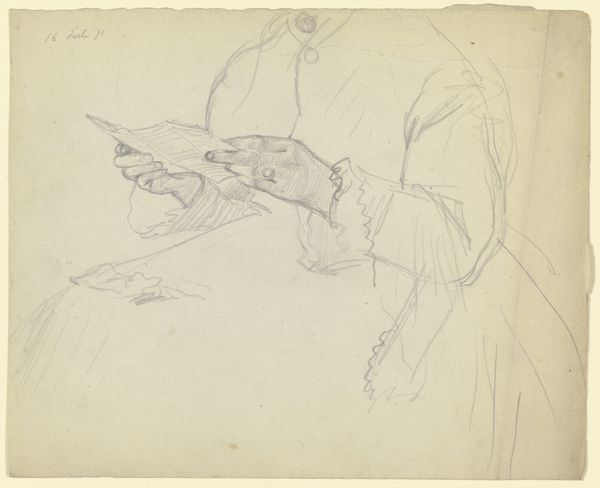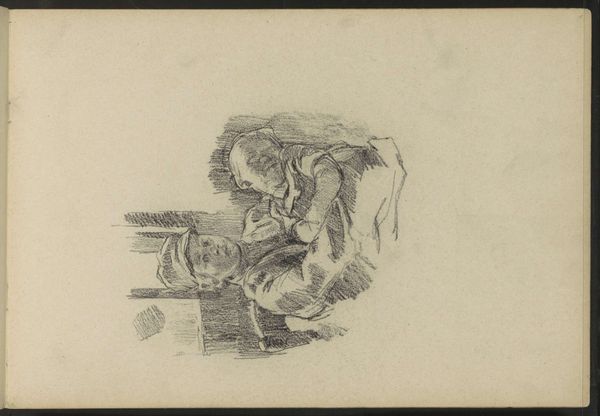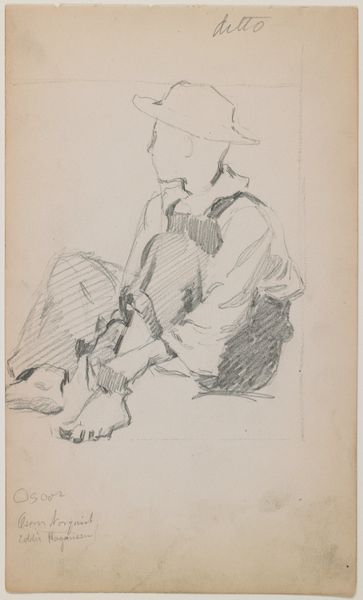
drawing, pencil
#
drawing
#
amateur sketch
#
light pencil work
#
quirky sketch
#
pen sketch
#
pencil sketch
#
form
#
personal sketchbook
#
pen-ink sketch
#
pencil
#
line
#
sketchbook drawing
#
academic-art
#
sketchbook art
#
realism
#
initial sketch
Dimensions: height 204 mm, width 166 mm
Copyright: Rijks Museum: Open Domain
Curator: Here we have "Studie van een schelp," or "Study of a Shell," a pencil drawing dating from somewhere between 1876 and 1951, by Theo Nieuwenhuis, currently held in the Rijksmuseum collection. It’s quite a striking image, isn't it? Editor: It is! The hatching gives it such a wonderful three-dimensional quality. There's a solidity to the shell, even in this sketch. Curator: Well, the Rijksmuseum tells us very little about the circumstances under which Nieuwenhuis made this drawing. Looking at the detail, though, it's not hard to imagine it being an exercise for design, perhaps destined for eventual application in decorative arts, given Nieuwenhuis’ wider production. The rendering is quite precise, carefully considered in its tonal contrasts. Editor: Yes, the cross-hatching definitely gives it form, but to me, there's also something beyond just technical skill. Considering the era it’s made in – between the late 19th and early 20th century – shells, especially ones as distinctive as this, become wrapped up in colonial narratives. Were they collected as trophies of a sort, marking an individual’s experience with, or domination over, another part of the world? It’s difficult to say with a small drawing such as this, but I think it important to bear in mind the potential layers of context at play here. Curator: It’s also worth remembering that for many artists, scientific accuracy was a valued skill and something which spoke of an increasingly secular outlook. While your colonial perspective might hold weight in certain biographical readings, it doesn’t always need to be present. What if Nieuwenhuis’ interest was more simply concerned with natural forms as beautiful designs in and of themselves? Editor: That may be, but this sketch style seems intensely private; perhaps a preliminary study that became something much more charged than what the artist had first intended. As art history continues to recognize figures historically kept in the margins—whether in terms of gender, race, or other social identities—it prompts us to seek those obscured intersections in images such as this one, no matter how simple. Curator: That is definitely a lens to be explored when encountering this unassuming but captivating "Studie van een schelp." Editor: Exactly. It reminds us that the most intimate creations are often mirrors, reflecting both maker and the broader social currents of the time.
Comments
No comments
Be the first to comment and join the conversation on the ultimate creative platform.
